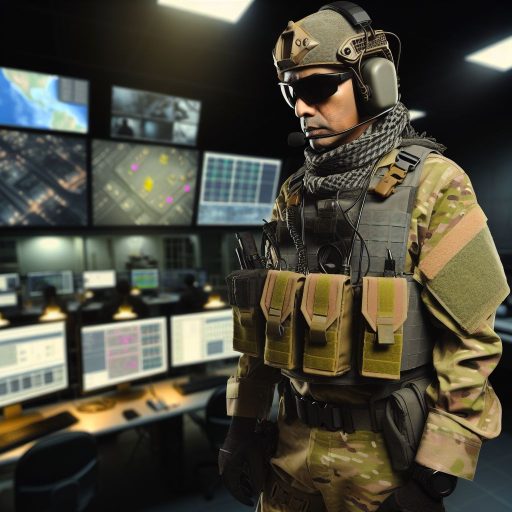Introduction:
Disaster response efforts are crucial for saving lives and minimizing damage during catastrophic events.
In this blog post, we will explore case studies of successful disaster response efforts.
Case Study 1: Hurricane Katrina
On August 29, 2005, Hurricane Katrina, a Category 5 storm, made landfall in Louisiana, specifically affecting the city of New Orleans.
Overview of the Disaster and Its Impact on New Orleans
The hurricane caused catastrophic damage, breaching levees and flooding 80% of the city, leading to over 1,800 deaths and displacing thousands of residents.
Description of Successful Response Efforts
- Immediate aid distribution: Emergency services provided food, water, and medical supplies to those stranded or in need.
- Rescue missions: Search and rescue teams worked tirelessly to evacuate people from flooded areas, saving countless lives.
- Shelter and relocation: Temporary shelters were set up, and plans were made to relocate displaced individuals to safer areas.
Lessons Learned from the Disaster and Improvements Made
The response efforts during Hurricane Katrina revealed critical areas for improvement in disaster management:
- Communication breakdowns: Lack of coordination between agencies hindered response efforts. Improved communication systems were established for future disasters.
- Logistical challenges: Delays in aid delivery and rescue missions highlighted the need for better pre-planning and resource allocation.
- Community engagement: Engaging local communities in disaster preparedness and response plans became a priority to enhance resilience.
The lessons learned from Hurricane Katrina led to the implementation of new strategies and protocols to ensure more effective disaster response in the future.
Case Study 2: 2010 Haiti Earthquake
On January 12, 2010, a devastating earthquake with a magnitude of 7.0 struck Haiti.
This event caused widespread destruction and loss of life.
The capital city, Port-au-Prince, was particularly hard hit, with buildings collapsing and infrastructure severely damaged.
Background Information on the Earthquake and Its Devastation in Haiti
The earthquake in Haiti was one of the deadliest in history.
It resulted in estimates of over 200,000 people killed and millions displaced from their homes.
The country, already one of the poorest in the Western Hemisphere, was ill-prepared for such a disaster.
The lack of building codes and proper infrastructure made the impact of the earthquake even more severe.
Many public buildings, including schools and government offices, collapsed.
This further exacerbated the humanitarian crisis.
Analysis of Successful International Aid Efforts and Collaboration Between Organizations
In the aftermath of the earthquake, the international community rallied to support Haiti.
Humanitarian organizations, governments, and NGOs from around the world mobilized resources.
Their goal was to provide emergency relief to those affected by the disaster.
One of the key success factors in the international aid efforts was collaboration between different organizations.
Coordination and communication between humanitarian agencies helped ensure resources were distributed effectively.
Transform Your Career Today
Unlock a personalized career strategy that drives real results. Get tailored advice and a roadmap designed just for you.
Start NowThe use of technology, such as mobile phones and social media, played a crucial role in coordinating aid efforts.
This allowed for a more targeted response and better allocation of resources to areas most in need.
Impact on Rebuilding Efforts and Long-Term Recovery Strategies
Despite the initial influx of aid and support, the road to recovery for Haiti has been long and challenging.
Rebuilding efforts have been slow, hampered by corruption, political instability, and lack of proper planning.
However, the disaster also presented an opportunity for Haiti to rebuild better and stronger.
International organizations have been working with local communities to develop sustainable recovery strategies.
These strategies aim to improve infrastructure, healthcare, education, and economic development.
Investing in disaster preparedness and resilience has become a critical component of the recovery process.
By strengthening infrastructure, building codes, and early warning systems, Haiti can better withstand future disasters.
This will help protect its population from harm.
Gain More Insights: Cybersecurity Specialist: Key Techniques for Threat Hunting
Case Study 3: Fukushima Nuclear Disaster
On March 11, 2011, a massive earthquake and tsunami hit Japan.
This triggered a nuclear disaster at the Fukushima Daiichi Nuclear Power Plant.
The reactors lost cooling capabilities, leading to meltdowns and releases of radioactive materials.
The aftermath of the Fukushima nuclear disaster was devastating.
Thousands of residents were evacuated from the surrounding areas.
The entire region suffered long-lasting environmental and health consequences.
Successful Evacuation and Containment Efforts
- Authorities acted swiftly to evacuate residents within a 20-kilometer radius of the plant.
- Emergency response teams worked tirelessly to contain the spread of radioactive materials and prevent further damage.
- International collaboration and support played a crucial role in managing the crisis effectively.
- Critical infrastructure such as hospitals and shelters were mobilized to support evacuees and provide medical assistance.
- Regular updates and clear communication helped residents make informed decisions during the evacuation process.
Long-Term Implications and Lessons Learned
- The Fukushima disaster highlighted the risks associated with nuclear power and the importance of stringent safety measures.
- Lessons learned from Fukushima have led to improvements in nuclear plant design, emergency response protocols, and public awareness campaigns.
- Countries with nuclear facilities have implemented stricter regulations and safety standards to prevent similar disasters.
- The long-term environmental and health impacts of the Fukushima disaster continue to be studied and monitored for future prevention strategies.
- International cooperation in disaster response and recovery efforts has become a priority to address global threats effectively.
Delve into the Subject: Collaborating with Informants: DEA Agent Insights

Case Study 4: 9/11 Terrorist Attacks
In this case study, we will delve into the tragic events of September 11, 2001.
Showcase Your Business Today
Reach thousands of readers actively exploring professional services. Publish your business profile and grow your audience now.
Publish NowOn that day, terrorists carried out coordinated attacks on the World Trade Center in New York City and the Pentagon in Washington D.C.
Overview of the Attacks
The attacks on the World Trade Center involved two hijacked commercial airplanes crashing into the Twin Towers.
These crashes caused massive destruction and immense loss of life.
Another hijacked plane targeted the Pentagon, the headquarters of the United States Department of Defense.
Coordinated Response Efforts
The emergency services and government agencies responded swiftly to the unprecedented scale of destruction.
Firefighters, police, paramedics, and other first responders worked tirelessly to rescue survivors and manage the chaos.
The coordinated response efforts involved a massive mobilization of resources.
This mobilization included deploying additional emergency personnel, setting up triage centers, and establishing communication channels.
These actions were critical to coordinate rescue and recovery operations.
Changes in Security and Emergency Response Protocols
The 9/11 attacks led to a significant reevaluation of security and emergency response protocols at local, state, and national levels.
The following are some key changes implemented post-9/11:
- Enhanced Intelligence Sharing: Government agencies and law enforcement bodies improved their collaboration and information-sharing to prevent future attacks.
- Creation of Department of Homeland Security: In response to the attacks, the Department of Homeland Security was established to coordinate efforts to protect the country from future threats.
- Strengthened Airport Security: The Transportation Security Administration (TSA) implemented stricter screening measures for passengers and luggage to enhance aviation security.
- Emergency Preparedness and Response Training: First responders and emergency personnel underwent enhanced training to improve their ability to handle complex and large-scale emergencies.
- Infrastructure Hardening: Critical infrastructure facilities, such as government buildings and transportation hubs, were reinforced to withstand potential attacks and minimize damage.
The 9/11 terrorist attacks were a wake-up call for the United States and the world.
This tragic event highlighted the need for enhanced security measures and improved emergency response capabilities in the face of evolving threats.
Explore Further: Challenges Faced by K-9 Officers in the Line of Duty
Key Takeaways from Disaster Response Efforts
Recap of the case studies and key takeaways from each disaster response effort:
In the case studies discussed, we learned about the importance of efficient communication and coordination among various agencies involved in the disaster response efforts.
Each successful response highlighted the significance of pre-planning, training, and the flexibility to adapt to changing circumstances during emergencies.
From the Hurricane Katrina response to the Fukushima nuclear disaster, these case studies exemplify the critical role of leadership, resource allocation, and community engagement in effective disaster management.
Importance of studying successful responses for future disaster preparedness:
By analyzing successful disaster response efforts, we can identify best practices and lessons learned that can be applied in future disaster scenarios.
By understanding what worked well and what challenges were faced, we can enhance our preparedness and response capabilities.
Studying successful responses also helps in building resilience and ensuring better outcomes in times of crisis.
Call to action for continued support and improvement of disaster response initiatives:
It is crucial to continue supporting initiatives that focus on disaster preparedness and response.
This includes investing in training programs, updating infrastructure, and promoting community resilience.
By fostering collaboration between government agencies, NGOs, and local communities, we can build a more robust and efficient disaster response system.
Together, we can work towards minimizing the impact of disasters and protecting lives and livelihoods.
Additional Resources
Addressing Social Determinants of Health: Examples of Successful …
Hurricane Katrina: Lessons Learned – Chapter Five: Lessons Learned
[E-Books for Sale]
The Big Book of 500 High-Paying Jobs in America: Unlock Your Earning Potential
$19.99 • 500 High-Paying Jobs • 330 pages
Explore 500 high-paying jobs in America and learn how to boost your career, earn more, and achieve success!
See All 500 High-Paying Jobs of this E-Book
1001 Professions Without a Degree: High-Paying American Jobs You Can Start Now
$19.99 • 1001 Professions Without a Degree • 174 pages
Discover 1001 high-paying jobs without a degree! Unlock career tips, skills, and success strategies for just $19.99!




